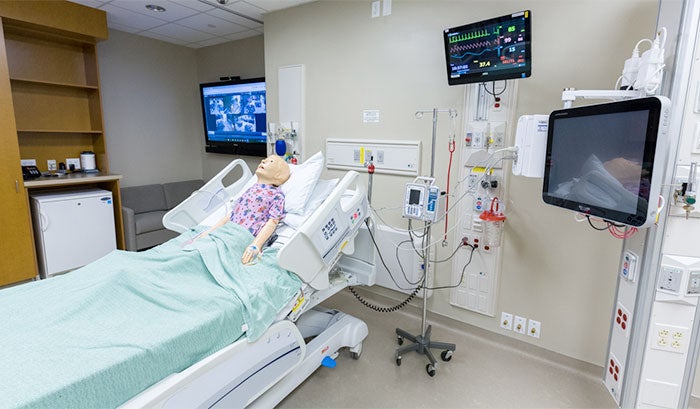Pediatric simulation center provides realistic learning environment

Children's Minnesota, Minneapolis, has opened an on-site pediatric simulation center that features an exact replica of a children’s intensive care unit (ICU)
Children's Minnesota, Minneapolis, has opened an on-site pediatric simulation center that features an exact replica of a children’s intensive care unit (ICU) where staff and students can gain realistic experience.
The simulation center will provide health care staff and medical students with a safe and realistic environment to train and practice high-risk procedures and increase team communication, coordination and skills.
In 2015, Children's Minnesota staff participated in more than 4,000 hours of training at an off-site location or as space was available in patient units.
With a dedicated on-site facility, the simulation center will be more easily accessible for staff, especially those on night and weekend shifts in Minneapolis. Clinicians also will use the center across the Children's Minnesota system, as well as clinicians in the region.
In addition, it is anticipated that the center will attract and retain top-talent physicians graduating from medical schools who want access to on-site simulation centers for hands-on training.
"Part of Children's Minnesota's commitment to improving outcomes and patient safety, as well as developing innovative new procedures, results from practicing nonpatient-based procedures in a simulated environment," says David Dassenko, M.D., medical director of the pediatric cardiac ICU at Children's Minnesota.
The 8,000-square-foot Michael and Judith Wright Family Pediatric Simulation Center is located within the Children's Minnesota Minneapolis campus and is scheduled to begin simulations next month.
The center uses computerized infant- and child-sized mannequins, along with sights and sounds, to reproduce a clinical environment that provides the same challenges as a real emergency.
A state-of-the-art control room allows technicians to run three simulations simultaneously. A debriefing room allows video playback to discuss the simulation and analyze opportunities for change and improvement.
"This dedicated, on-site simulation center means we can continuously improve the care we provide by frequently training our teams on complex procedures and how to function and communicate in chaotic, high-stress situations in a low-risk setting," Dassenko says.
In the future, Children's Minnesota plans to utilize new technology to share simulations externally for conferences and webinars.
The simulation center is the first and only one in the state to meet the accreditation standards of the Society for Simulation in Healthcare, according to Children’s Minnesota.
Children's Minnesota is one of the largest pediatric health systems in the United States and the only health system in the state to provide care exclusively to children from pre-birth through young adulthood.
An independent and nonprofit system since 1924, Children's Minnesota serves kids throughout the Upper Midwest at two freestanding hospitals, 12 primary and specialty care clinics and six rehabilitation sites.
In addition to the lead gift from Michael and Judith Wright, funds raised from Challenge for Children's and other community supporters will help to support the new center.




